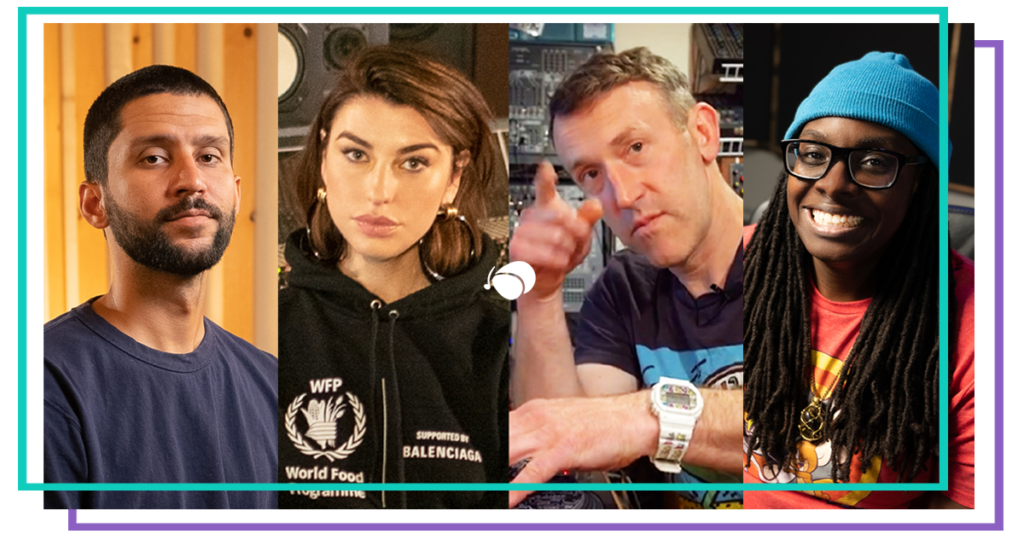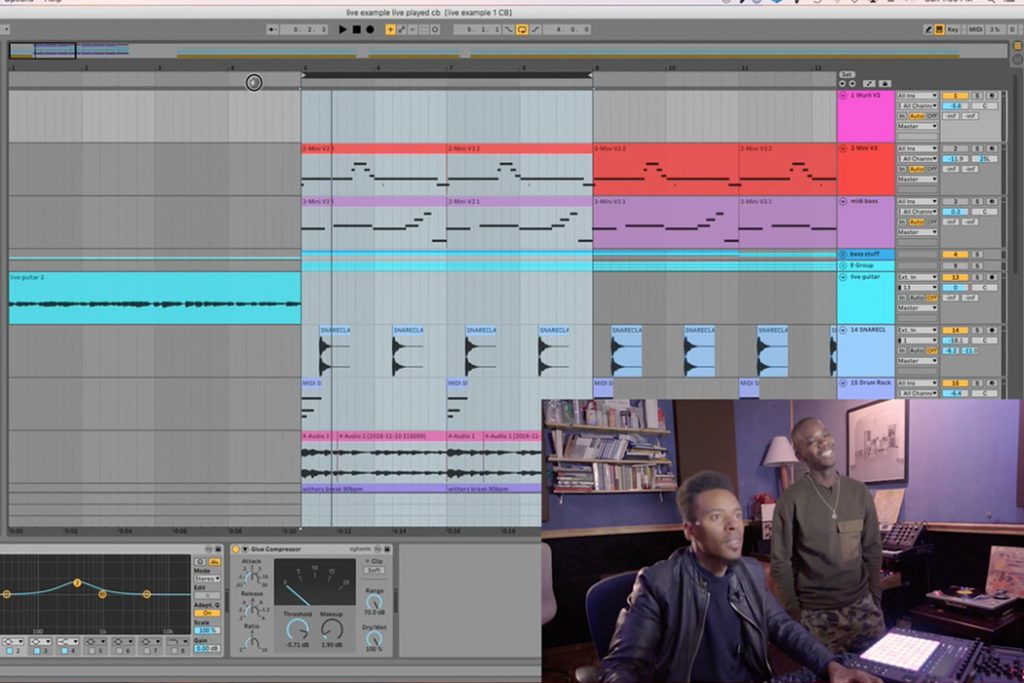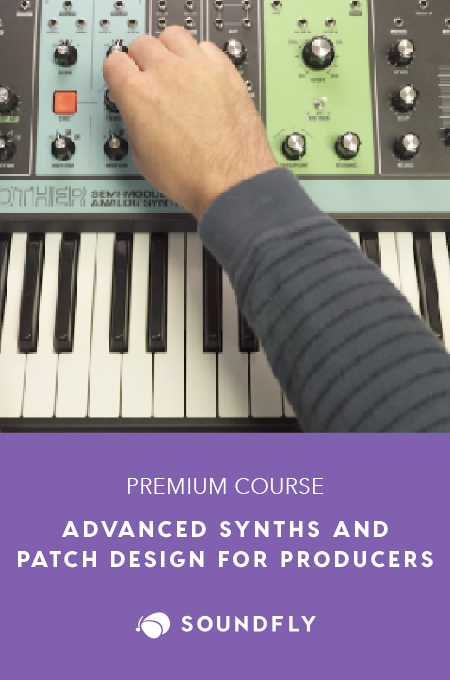+ Harness your inner groove and your outer authenticity with drummer, producer, and artist The Pocket Queen. Check out her course on Soundfly.
When working on an instrumental beat, it can be tempting to go straight for the drum rack and start loading 808s, big snares, hi-hats, etc. After all, even though an instrumental track has multiple elements in it — from chords to melody to rhythm — we usually just call them “beats.”
But what really makes a good beat memorable?
Of course, the drums, but there’s more to a good “beat” than just drums. Before you dive into your next track, we suggest taking a moment to focus on two of the most foundational elements of a song: chords and melody. When you think of all the songs you’ve loved over the years, what usually comes to mind? Chances are, it’s the melody. And what supports a melody? Chords (and harmony).
Whether it’s a nursery rhyme or a pop hit, the melody always stands out. And even if you’re just a “beat maker,” most people want more than just a loud 808 and trap hi-hat pattern; they want substance, melodic substance.
If you take a look at the modern hip-hop sound for example, you will typically notice that many of the drum beats follow the same pattern, yet it’s the melodies that stand out. For example, let’s listen to Future’s hit track “Mask Off.”
The beat itself is your typical run of the mill trap beat, but what makes the song so irresistible? It’s the flute melody and the chord progression. Being able to write catchy melodies and chord progressions will set your beats a part in a crowded field. Let’s dive deeper.
Change Your Workflow to Put Chords First
Before loading your drum rack or browsing your drum sample library, sit down at a keyboard or guitar or whatever melodic instrument you feel comfortable with and look for a chord progression. A strong chord progression can truly help a song transcend from sounding average to wholly unique. Take a look at XXYYXX’s “About You.”
The beat of this song is incredibly simple, but the chord progression has this hazy, meditative, jazzy energy that makes it addictive. If this beat were on its own, it would be arguably quite bland and boring, but with the chords, it immediately becomes something much more tantalizing.
Your progression can be as simple as I IV V, but take your time to come up with something that fits the mood of the song you’re going for. If you have a hard time coming up with chord progressions, try writing different chords out on pieces of paper and using the random hat trick.
We often think of cheesy music as sounding predictable and nursery-like, which is usually synonymous with basic chord progressions. But once you start experimenting with things like key changes and chromaticism, you can begin to really write unique sounding progressions that will stand out, rather than blend in.
+ Learn production, composition, songwriting, theory, arranging, mixing, and more; whenever you want and wherever you are. Subscribe for full access!

Focus on Writing Melody
Once you have a progression that feels right, start playing with melodies. A great way to come up with a good melody is to just start singing, with or without lyrics. Find something that’s catchy and simple. Worry about complexities later.
Take a tip from Icelandic post-rock group Sigur Rós — their front man wrote an entire album, entitled ( ), singing in a made-up language, but the melodies are incredible.
Of course, you don’t have to sing or sing gibberish, but it’s a great way to write toplines. From there, record the melody, and start transcribing.
Then, try writing another progression and melody. This could be your chorus, bridge, or even wind up being another song all together, but push yourself to come up with another progression and melody. Usually, the second round is easier because you can base it off the first idea, so you have a framework to work within.
While all it takes is one good melody to write a hit song, variation is always appreciated in a good song.
Up Next Is Harmony
Can you think back to a song with a melody that is pleasant, but doesn’t really transfix you? Then, a gorgeous harmony enters the mix, and suddenly you have chills?
The power of harmony is not to be underestimated, even if you’re only adding something small and simple to the equation. For example, listen to Bon Iver’s song “Woods,” and notice how he builds on the same lyric and melody with numerous harmonies until it becomes a cathartic climax. Each harmony adds another layer of emotion and complexity to the song.
We also want to acknowledge that not everyone approaches workflow the same way, and for many producers, starting with a beat is how they get inspired. If that’s the case, then we suggest only creating a minimal beat and put it on loop. From there, focus on your melody.
Again, really think about what makes a song a hit? It’s almost always the melody. If you, the producer, are able to interject great melodies into your beats, you are giving the vocalists who might buy your melodies a built-in topline. That makes you twice as valuable as an artist, because you’re essentially working as a songwriter and producer.
Walking the Fine Line
We also want to warn that not every instrumental beat should be chock full of melodies. If you’re looking to sell beats to rappers and your beat has too much melodic movement in it, the rapper might not be able to find a place for their own voice. You want to find a balance: have enough melodic presence to create a catchy beat, but not too much of a melodic presence that there’s no room for vocals.
Of course, if you are an instrumental producer who has no interest in adding vocals to your beats, then use as much melody as you please. For example, look at Bonobo’s song, “Cirrus.” There is no vocalist, but the song feels full and lush because of how packed it is with melody.
On the other hand, let’s look at a song like Chance The Rapper’s “Hot Shower,” and notice how little melody there is in the beat. Both tracks work for different reasons, but the vast majority of good instrumentals exist somewhere in the middle.
How to Write Chords if You Don’t Know Music Theory?
For producers without musical training or knowledge of music theory, there are several royalty free sample libraries out there with looped chord progressions and melodies. Browse those libraries until you find something you like, but don’t stop there. If you find a chord progression sample, that means a hundred other producers have the same sample.
This is where it’s valuable to chop up the sample or reverse it to change the chord progression. Change the pitch or tempo, too. Utilize all the tools at your disposal in order to create something unique.
Or, you can always take an online course to learn a bit about beginner’s music theory for producers!
Keep on Grooving…
Continue your learning with hundreds of lessons on songwriting, mixing, recording and production, composing, beat making, and more on Soundfly, with artist-led courses by Kimbra, Com Truise, Jlin, Kiefer, RJD2, and our new The Pocket Queen: Moving at Your Own Tempo.




